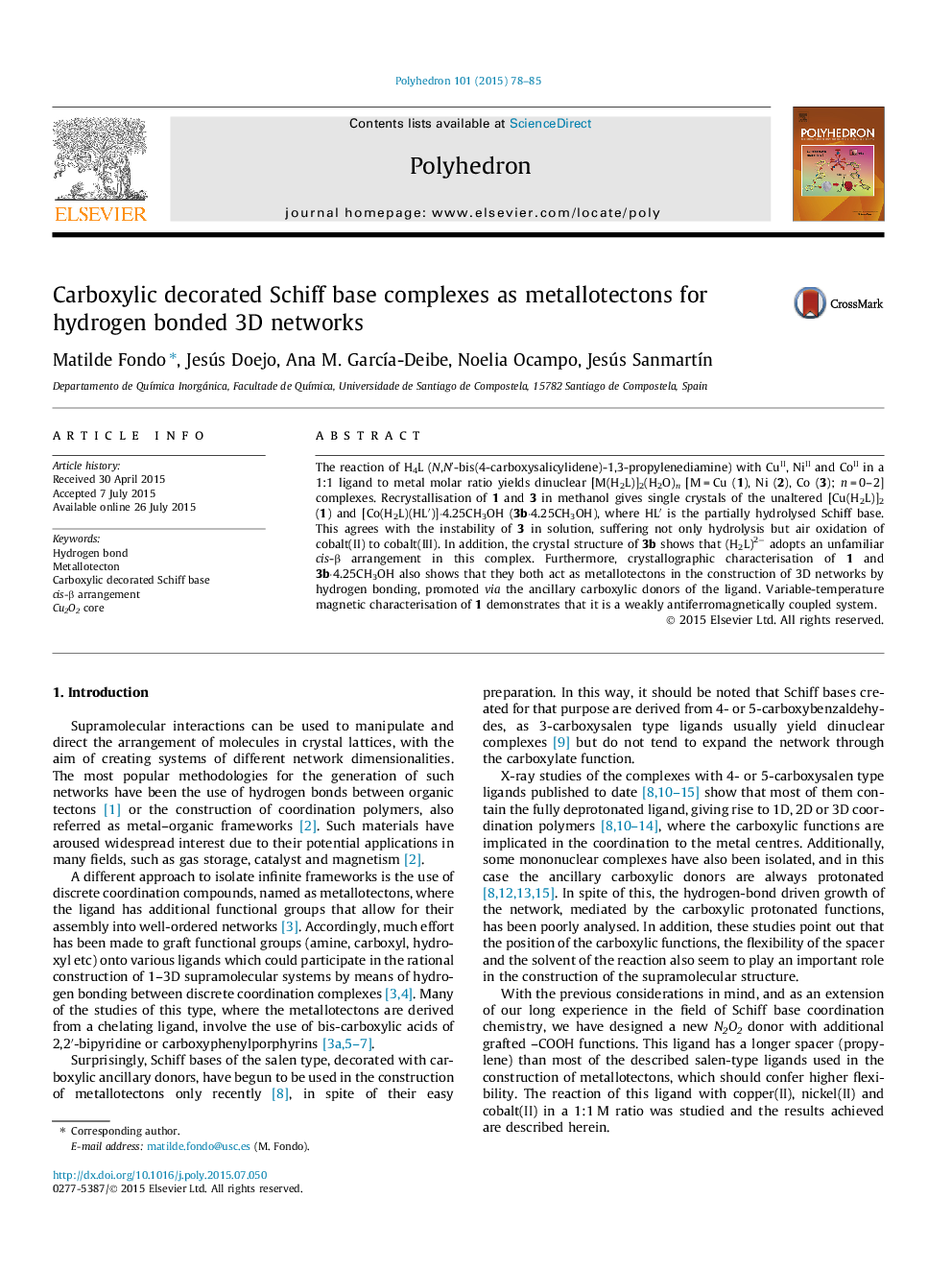| کد مقاله | کد نشریه | سال انتشار | مقاله انگلیسی | نسخه تمام متن |
|---|---|---|---|---|
| 1336818 | 1500238 | 2015 | 8 صفحه PDF | دانلود رایگان |

The reaction of H4L (N,N′-bis(4-carboxysalicylidene)-1,3-propylenediamine) with CuII, NiII and CoII in a 1:1 ligand to metal molar ratio yields dinuclear [M(H2L)]2(H2O)n [M = Cu (1), Ni (2), Co (3); n = 0–2] complexes. Recrystallisation of 1 and 3 in methanol gives single crystals of the unaltered [Cu(H2L)]2 (1) and [Co(H2L)(HL′)]·4.25CH3OH (3b·4.25CH3OH), where HL′ is the partially hydrolysed Schiff base. This agrees with the instability of 3 in solution, suffering not only hydrolysis but air oxidation of cobalt(II) to cobalt(III). In addition, the crystal structure of 3b shows that (H2L)2− adopts an unfamiliar cis-β arrangement in this complex. Furthermore, crystallographic characterisation of 1 and 3b·4.25CH3OH also shows that they both act as metallotectons in the construction of 3D networks by hydrogen bonding, promoted via the ancillary carboxylic donors of the ligand. Variable-temperature magnetic characterisation of 1 demonstrates that it is a weakly antiferromagnetically coupled system.
The new carboxylic decorated Schiff base ligand H4L yields dinuclear [M(H2L)]2 complexes, where the protonated carboxylic functions expand the metallotectons into 3D hydrogen bonded networks.Figure optionsDownload as PowerPoint slide
Journal: Polyhedron - Volume 101, 24 November 2015, Pages 78–85